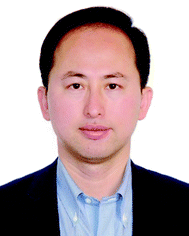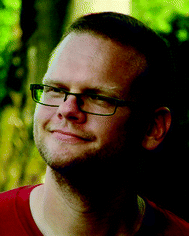Macrocycle-based supramolecular elements
Hai-Bo
Yang
 a and
Christoph A.
Schalley
a and
Christoph A.
Schalley
 b
b
aEast China Normal University, Shanghai, China. E-mail: c.schalley@fu-berlin.de
bFreie Universität Berlin, Berlin, Germany. E-mail: c.schalley@fu-berlin.de
In 2020, Schmidt and Würthner put forward the idea of “a periodic system of supramolecular elements”.1 The expectation in this essay published in Angewandte Chemie was that the advancement of supramolecular building blocks with multiple binding sites and predictable secondary structures would allow the supramolecular chemist to design larger supramolecular ensembles with a new level of sophistication. Toward this goal a toolbox of supramolecular elements might be utilized that can be organized in analogy to the periodic table of elements. Although it may not yet be fully clear to which principles this periodic table of supramolecular elements will finally be ordered, certainly the shape, and topology, the degree of oligomerization, the type of intermolecular interactions, the degree of well-defined folding, and the functions achieved, may be among these principles. This spans a multidimensional property space, from which supramolecular chemists can draw inspiration as well as building blocks to be used to achieve a certain goal.
In this themed collection, we have made an attempt to assemble contributions from researchers around the world, who make use of macrocyclic supramolecular elements. When going through the more than 40 published articles that have reached us, one observes with awe, how broad the range of the articles is – even though the themed collection already aimed at restricting itself to macrocyclic structures. Along the topology dimension, we find macrocycles as well as interlocked molecules such as rotaxanes, catenanes and trefoil knots, and even higher-order structures, such as [3]catenanes and polymeric rotaxanes with mechanically bonded links between their strands. The degree of polymerization ranges from single macrocycles as hosts for molecular recognition, through supramolecular fibrous polymers and 2D sheets all the way to three-dimensional solid state packing of macrocycle complexes. The type of interactions is highly diverse and not only comprises the well-programmable directional interactions such as metal coordination or hydrogen bonding, but also π-stacking, the hydrophobic effect and many more. Maybe, this dimension of intermolecular interactions also comprises solvent effects – if one does not intend to consider it a separate dimension in the periodic table of supramolecular elements. Certainly, water is a very particular solvent that changes non-covalent interactions drastically and thus, it is a pleasure to also see several contributions that make use of these particular effects of water as a solvent. Finally, there are numerous functions implemented in the supramolecular systems reported in the themed collection, which include the classics such as (allosteric) molecular recognition and sensing, but also more sophisticated ones like molecular switching, catalysis, light-harvesting, selective purification of fullerenes and low critical solution temperature phenomena.
All this would be impossible without chemical synthesis being at an excitingly high level, and the selection of articles included in this themed collection also comprise contributions that solve non-trivial synthetic tasks such as a direct functionalization of crown ethers with covalently linked side chains.
We take this opportunity to sincerely thank all the dedicated authors who have contributed to this themed collection for their excellent articles and are grateful to the editorial team for their highly professional support during the assembly of this themed collection.
References
- H.-W. Schmidt and F. Würthner, A Periodic System of Supramolecular Elements, Angew. Chem., Int. Ed., 2020, 59, 8766–8775 CrossRef CAS PubMed.
| This journal is © the Partner Organisations 2021 |


